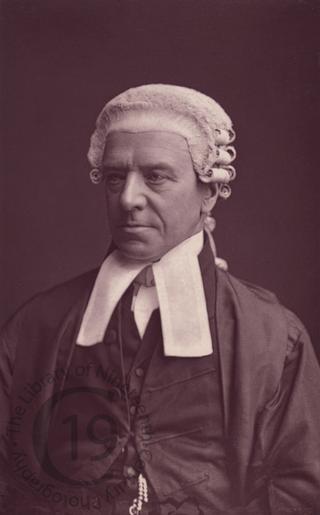
Sir Henry Hawkins
A carte-de-visite portrait of Henry Hawkins (1817-1907), counsel against the Claimant in the Tichborne trial. He was raised to the bench in 1876, with the title Sir Henry Hawkins and in 1899 was raised to the peerage with the title Baron Brampton.
His name is identified with many of the famous trials of the reign of Queen Victoria. He was engaged in the Simon Bernard case, in that of Roupell v. Waite, and in the Overend-Gurney prosecutions. The two causes célèbres, however, in which Hawkins attained his highest legal distinction were the Tichborne trials and the great will case of Sugden v. Lord Saint Leonards. In both of these he won. He had a lucrative business in references and arbitrations, and acted for the royal commissioners in the purchase of the site for the new law courts.
As a judge he presided over several of the most famous criminal trials of his day. His first major case was the 1877 trial of Louis Staunton and his brother Patrick, and two others, for the murder of Louis's wife Harriet and her baby by starvation (popularly know as The Penge Murders). He was also the judge at the trials of Dr George Henry Lamson for the poisoning of his brother-in-law Percy Johns at Wimbledon in December 1881 (the trial was in April 1882), the trial of Dr Thomas Neill Cream for the Lambeth/Stepney poisonings of prostitutes from December 1891 to April 1892 (the trial was in November 1892), and the trial of Albert Milsom and Henry Fowler for the Muswell Hill murder in February 1896 (the trial was in May 1896).
Photographed by the London Stereoscopic and Photographic Company.
Code: 125361




